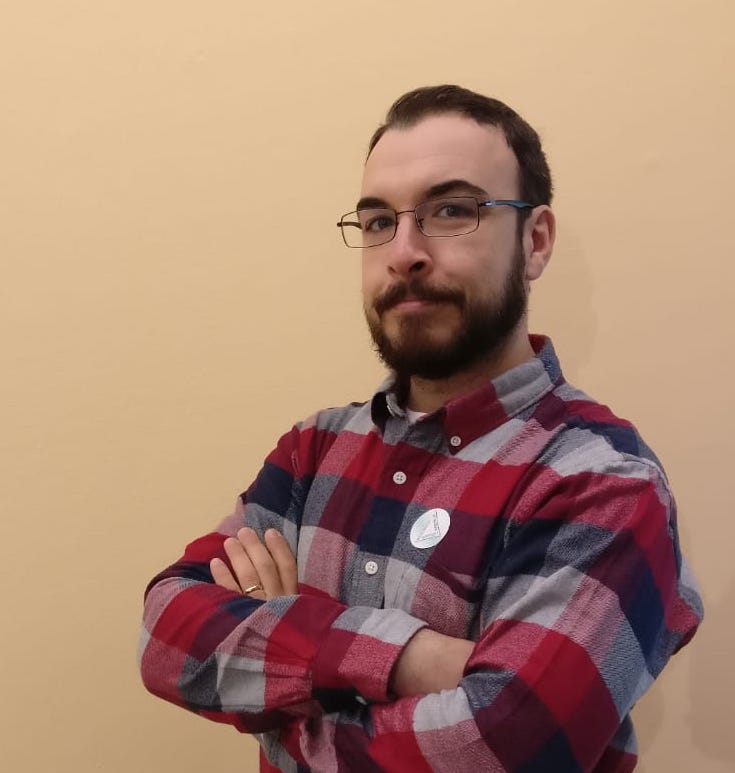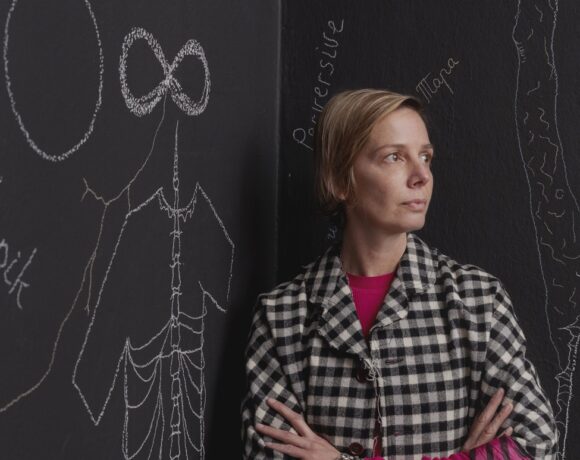Yasmine Helou is a figure outside the traditional box when it comes to curatorial practice. It may also be for this reason that many experts in the Venetian lagoon report her as the most interesting curator among the new generation. Yasmine cannot be labeled, what drives her is the immense desire to know and to get involved, and this peculiarity of her, in my opinion, will take her far away. Before she left for Mexico for a project she curated, I had the opportunity to interview her.
Francesco Liggieri: As I always do, I would like to start this conversation asking you to describe yourself through an artwork.
Yasmine Helou: A Bar at the Folies-Bergèreby Manet… I’m kidding, but I have this more or less secret dream of owning, one day, a place where I can make people dance. Perhaps it is for this reason that the vernissages I organize often end in parties! An artwork that defines me, could be Simone Fattal’s installation, Breeze over the Mediterranean Sea. I consider myself very Mediterranean, half Italian, half Lebanese, I grew up between Beirut and Rome, and now I am living on an island in this same sea, meeting point between East and West. In addition, this installation is about Pompeii, a mystical place where a multitude of Mediterranean cultures have remained fixed in a time that does not exist, coexisting forever in the almost impossible limbo of harmony in difference.
Do you think that contemporary art already said it all or can we expect something new?
Contemporary art follows a strange evolution, exactly like humanity in general, so we can always expect new things, as long as they are good. We are now in a total experimentation phase, at an artistic, technological and political level. History and art history will not stop.
In your opinion, what still does not work in the Italian artistic/cultural panorama?
I think that young and emerging artists, curators and creatives are not sufficiently supported by the Italian cultural policy and by institutions. But this is obvious!In a certain way this makes them very resilient, helping to create a very interesting and extremely dynamic underground cultural scene, but, in the same way, this situation pushes the new cultural realities to escape from Italy, to find refuge where the art scene is more welcoming. We need to give more space to revolutionary ideas and to the new generations, always aiming for the vanguard, following a system of meritocracy and not just networking.
When did you realize you wanted to be part of the contemporary art world?
I don’t know, I’ve always had different passions, history, history of art, opera, theater, political science. I don’t think I really decided to study to be part of the artistic/cultural world, it happened.Now I cannot see myself doing anything else, and that is also the reason why I stay in Venice, I want to continue promoting contemporary art for everyone, and not just in the Biennale period.
What are three exhibitions you have curated that can describe your work?
My work is very eclectic, but I would say that the fil rougethat directs it it is the fact that I almost always prefer to work with artists more or less of my generation, this gives me the opportunity to converse and philosophically grow together, always trying to create immersive environments, situations and spaces. There are themes that are dear to me, and, for example, being able to bring in Venice the work of Jasmine Abu Hamdan, with Hakawati Retold, made me very proud. The exhibition consisted of a reproduction of the soundscape of the Aleppo market (now disappeared due to the war in Syria), which has allowed to revive a tangible heritage through its intangible heritage, namely the one made of the stories recorded at the market. Another exhibition that I remember with pleasure is Troubled Waters, Jacopo Zanessi’s first solo show. Being able to give him the right space, in Venice with works about Venice, to finally express himself after several years of conversation was truly gratifying.Meteora, the project he presented for the first time in this show, has been then selected by Biennale College Cinema to develop a cinematic work in virtual reality. You can imagine the pride in being one of the first people to believe in this idea! I am also quite content with the last exhibition I curated, Omnibus, in Mexico City, at the Art House Project, during the week of art.I had the opportunity to present several international artists (Alfred Tarazi – Lebanon, Lily Moebes – United States, Zahra Bundakji – Saudi Arabia, Thomas Mendonça – France, Mateo Revillo – Spain) with whom I had already worked, creating a unicumin variety. The show overall was a real mix of ideas, balanced by a desire to question political/aesthetic concepts, and to highlight very contemporary themes.
How has the pandemic affected your profession?
The pandemic blocked the physical production of cultural exhibitions and projects, but made me think about alternatives. I wrote a lot during this period, then I got to organize Alwan Li Beirut / Colors for Beirut, an online fundraising campaign to rebuild the cultural spaces destroyed by the explosion of the 4thof August 2020 in Beirut. So, I managed to give visibility to some Lebanese artists by helping to reconstruct an essential side of the city. When life went back to a kind of normality, I suddenly had a lot of plans to carry out. 2021 has been a very productive year, I took over the spaces of Venice Art Projects, in Castello neighborhood, and I have created a real program of exhibitions and events.
According to some insiders in the lagoon, you are one of those figures who will lead the way. How do you see yourself in the future?
To answer you, as I said before, I have the impression that things simply happen a little out of nowhere and a little because I dedicate myself so much to my work and to the Venetian cultural world.
If you could take part in a historical period of art, which one would you choose?
It’s not a simple question. I wanted to be friends with a lot of geniuses in the art world, for example I’m sure that Andy Warhol’s parties were epic! Seriously, I am happy to live in the 21st century, it is an important period for women, and I think that in another era it was much more difficult to make your way in a world of very self-centered and misogynistic men. Said that, I still wanted to make happenings with Fluxus, to give Picasso a slap, to have a crash course in art market with Leo Castelli and to be friends with Lee Krasner, Mondrian and Artemisia Gentileschi.All periods in art history are exciting, but I am happy to live these years, even if I still have a little difficulty understanding NFTs.
Info:
Yasmine Halou
www.yasminehelou.com
 Yasmine Helou, courtesy Yasmine Helou
Yasmine Helou, courtesy Yasmine Helou
 Hakawati Retold, courtesy Jasmine Abu Hamdan
Hakawati Retold, courtesy Jasmine Abu Hamdan
 Exhibition Troubled Waters, courtesy Yasmine Helou
Exhibition Troubled Waters, courtesy Yasmine Helou
 Thomas Mendonca e Lily Moebes at the exhibition Omnibus, Arthouse Project, courtesy Yasmine Helou
Thomas Mendonca e Lily Moebes at the exhibition Omnibus, Arthouse Project, courtesy Yasmine Helou

Independent artist and curator. Founder of No Title Gallery in 2011. I observe, study, ask questions, take informations and live in contemporary art, a real stimulus for my research.






NO COMMENT